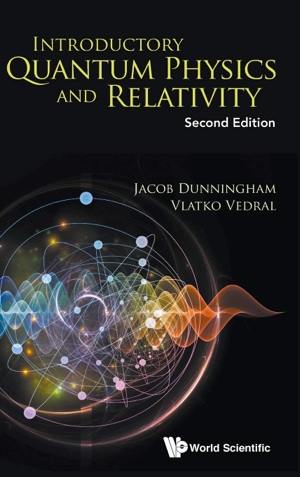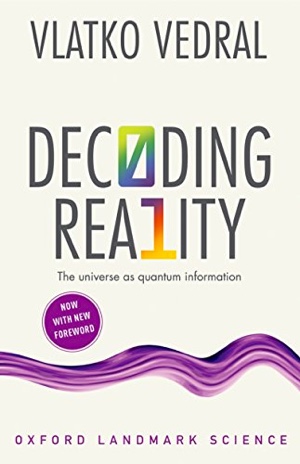How Much of Mathematics is Really Just Physics?
I’d like to dedicate this short piece to my late friend Prof. Peter T. Landsberg, who was a “thermodynamicist” (this is how he liked to call himself). I used to meet him at the Athenaeum, in the good old days when smoking cigars was still allowed indoors. We would sit in one of the rooms of the club, order a drink and – while lighting our cigars – start a discussion about some topic in physics or other.
Peter was fond of my field (quantum physics) and I have always been mesmerised by thermodynamics. My PhD thesis was based on using methods similar to the ones in thermodynamics to quantify quantum entanglement, the effect that Einstein famously called “spooky action at a distance”. I also enjoyed Peter’s stories about some of his exchanges with other (especially famous) physicists. The one that stands out was when he proved Pauli wrong on ergodicity (there is a letter from Pauli to his collaborator, Fierz, which basically admits that Landsberg’s criticism of their work is fully justified – you can find it on the web if you google “Pauli, Landsberg, H-theorem”).
Peter was very passionate about thermodynamics (I laughed when I learnt that his son’s first word was “Caratheodory”, whose formulation of thermodynamics Peter helped rescue from obscurity) and our discussions were always exciting. We even wrote a paper together on information theory and thermodynamics (introducing an entity now called the “Landsberg-Vedral” entropy). However, during one such meeting, Peter told me something absolutely mind-blowing. Something that I will never forget.
He said, the fact that the arithmetic mean is always bigger than or equal to the geometric mean is a direct consequence of the Second Law of Thermodynamics.
I initially felt that this cannot possibly be right. What on earth is the connection between these two facts? The Second Law says that the disorder in the Universe can never decrease (and usually goes up). The arithmetic and geometric means are just statements about statistics, about different ways of talking about averages (you know, if we have three people and each is so and so tall, what is the average height kind of thing). Yeah, of course Peter would say something like that, I thought, he is an ardent thermodynamicist and he probably thinks everything is a consequence of the Second Law of thermodynamics.
But then he proceeded to prove it to me. I will illustrate it with two numbers, though the generalisation is immediate. Take two non-negative numbers a and b. Their arithmetic mean is (a+b)/2, while their geometric mean is √ (ab), i.e. the square root of a times b. Now, why does the Second Law say that the former is greater than or equal to the latter?
Here is where Peter’s beautiful argument comes in. Take two identical objects, but at different temperatures, say temperatures a and b. What final temperature will they reach if we put them together to allow for heat exchange between the two? If we just put them in contact without doing anything else, the final temperature will simply be the arithmetic mean (a+b)/2. This can be understood by energy conservation (aka the first Law of Thermodynamics) which stipulates that the initial and the final energies have to be the same (and energy is just equal to the Boltzmann constant times temperature).
However, if we do the same process but reversibly (this means slowly so that no extra heat is being dissipated throughout) then what gets conserved is the total entropy. This tells us that log a + log b = 2 log f, where f is the final temperature in this case (and log is the natural logarithm). Rearranging, we obtain f=√(ab), i.e. the final temperature in this case happens to be the geometric mean of the two initial temperatures.
Now comes the punchline. The final entropy in the first process, after the systems reach the same temperature, must be higher than in the second process. This is because the second process is reversible and the Second Law says that disorder does not increase in that case. So the entropy/disorder of the first process must be greater (as the first process is dissipative and therefore increases the disorder), i.e. (a+b)/2 is great than √(ab). They are equal only if a=b, in which case the temperatures are already equal to start with and nothing changes when we put them systems in touch.
Wow, I was speechless. Just think about it. If we lived in the universe where the arithmetic mean was smaller than the geometric one, then this universe would also violate the Second Law of Thermodynamics. Our lives would be like Benjamin Button’s, going in reverse. These kind of thoughts prompted me to look for other instances where the laws of physics implied mathematical relations. It made me also begin to form the idea that maybe the whole of mathematics just follows from the laws of physics! (I am sure all my colleagues in the maths department would disagree).
Let me give you another example. Take two perfectly reflecting mirrors and let them face each other while being parallel to each other. Quantum physics says that even with no particles of any kind present between the two mirrors (no atoms or photons or anything), there is still some energy there due to the quantum vacuum. Unlike in classical physics, the quantum vacuum is not really empty!
Casimir even calculated the force that would attract the two mirrors towards each other when in the quantum vacuum. When the mirrors are closer to one another, the quantum vacuum energy is smaller, which is what draws them together and manifests itself as an attractive force (the mirrors are seeking the state of the lowest energy, just like a ball falling towards the earth falls because it “wants” to minimise its gravitational potential energy).
The problem is as follows. Each frequency between the mirrors has ½ hν (i.e. half of Planck’s constant times the frequency) worth of energy in the quantum vacuum. The frequencies are discretised in units of nν0 where n is an integer and ν0 is the smallest allowed frequency between the mirrors (which is inversely proportional to the distance between the mirrors). The total energy is therefore ½ h ν0 (1+2+..n+…ꚙ). It is actually infinite because the number of possible frequencies between the mirrors is infinite.
However, the force between the mirrors is finite and corresponds to the energy – h ν0/24, the minus sign indicating the attractive force that Casimir calculated (and the subsequent experiments confirmed). This would imply that the sum of all the integers (1+2+..n+…ꚙ) actually equals -1/12. Believe it or not, there is a relationship like this in mathematics and it is due to the Indian mathematical genius Ramanujan. I won’t go into the details of how one can “prove” that the sum or infinitely many positive integral numbers can end up being a negative fraction (!), but in mathematics, this relationship actually makes sense.
The Ramanujan summation therefore follows from the quantum vacuum energy and the resulting Casimir force! In other words, if the world was governed by the laws of classical physics, Ramanujan’s arithmetic would have been wrong. I say this with a tongue in cheek, but the fact still is that this connection between quantum physics and arithmetic summations is unexpected and mysterious.
We of course know that many things we observe around us are the way they are because physics is the way it is. A (not so) random example comes to mind: spiders would not be able to climb up vertical walls if it wasn’t for a Casimir-like force between their hairy legs and the atoms constituting the walls. This force is so strong that it effortlessly counters the gravitational pull downwards (yes, spiders too owe it to quantum physics). Almost anything we see around us, and not just the phenomena in the micro world, are consequences of the simple laws of quantum physics and gravity.
However, mathematics is sometimes thought of having a life of its own. Its existence somehow seems independent and as real as what we see around us (2 + 2 is surely always 4 independently of our world, right?). Plato certainly thought that mathematics is the true reality, and the actual world we live in only an imperfect copy of the mathematical entities existing independently and immutably in (what we now call) the Platonic world.
Well, my friend Peter Landsberg had the courage to challenge this view and even turn it upside down. His creative way of viewing (at least some parts of) mathematics as following from the laws of thermodynamics was certainly an inspiration for me. One cannot help but think about whether we have integers ultimately because everything is made up of quanta? Is the geometry the way it is because of Einstein’s GR? Computers can exist in both classical and quantum worlds, but it is only in the quantum world that they can do certain computations much faster. Is anything in mathematics, even some totally esoteric result that no-one has seen any use for in the real world, ultimately a consequence of the laws of physics?
This view is obviously pleasing to a physicist. But it would also help us address Wigner’s incredulity expressed at what he saw was “the unreasonable effectiveness of mathematics in physics”. Mathematical effectiveness in physics would then not be unreasonable at all, since it is ultimately all just down to physics, really.
Sign up to my substack if you'd like to have my articles delivered straight to your inbox
ASK ME ANYTHING!
If you'd like to ask me a question or discuss my research then please get in touch.





